The History Of The Hard Drive And Its Future

Hard Drives: Storied Past, Uncertain Future
The hard drive has been the staple of the storage industry since the first one was shipped in 1956, and will continue to remain so for the foreseeable future. Eventually, new technologies will be developed that allow higher amounts of data to be stored and accessed faster and remain archived longer than possible using hard drives.
CRN takes you back in time, and into the future, to explore the development of hard drive technology, much of which was centered around development at IBM thanks to that company's lock on computer technology for much of the 1950s to 1980s.
Check out the rest of our special report on the state of the storage industry, which originally ran as an exclusive on the CRN Tech News App in November.
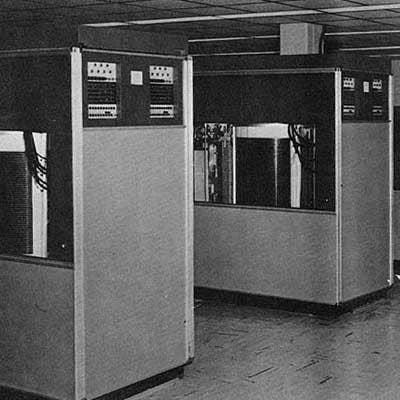
1956: The First Hard Drive
In 1956, IBM announced the first hard drive, the IBM 350 Disk File, which was designed to work with the IBM 305 RAMAC mainframe computer.
The IBM 350 Disk File weighed about one ton, and stored up to 5 million characters of data on 50 spinning disks.
Jim Porter, the late storage industry analyst, told CRN years ago that he was an employee at San Francisco-based Crown Zellerbach, which was the first customer to receive the IBM 350. Porter said he would take visitors to the company into the computer room to see the hard drive in action. Such a tour was made easy because of the clear glass exterior of the drive.
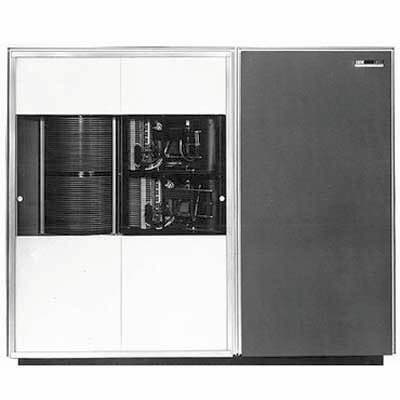
1961: Separate Arms For Each Platter, With Heads Moving On Air
While the IBM 350 Disk File and several successors came with a single actuator arm and magnetic head that moved up and down the stack of platters to do the data reads and writes, the IBM 1301 Disk Storage Unit featured a separate arm and head for each platter. All the arms moved in and out together. This eliminated the need to remove the arm/head from one platter and move it to another.
The IBM 1301 was also the first hard drive whose heads rode a thin layer of air caused by the spin of the platters. This kept the heads closer to the platters to increase storage density; it could store 28 million characters per module on 20 platters.
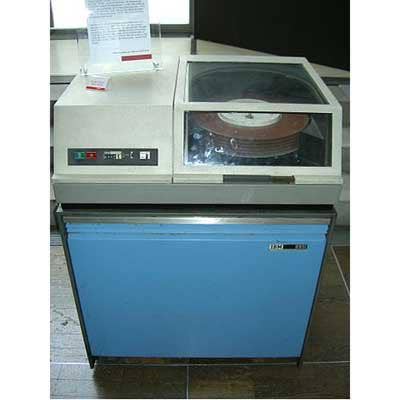
1964: Standardization Begins, Sort Of
The IBM 2311, introduced in 1964, was the second disk drive built for IBM's System/360 midrange computers, one of the most successful computers ever built.
Because of the variety of models in the System/360 family, the IBM 2311 was the first disk drive to be built with a standardized electrical connection, making it available across multiple versions of the computer.
That also made it possible for vendors other than IBM to look at manufacturing plug-compatible hard disks for IBM computers for the first time. Memorex was the first to do so, in 1968.
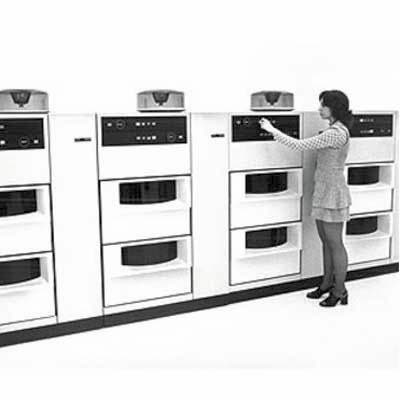
1970: Error Correction
With the introduction of the IBM 3330 Direct Access Storage Facility in 1970, the storage world was introduced to the concept of error correction, a technology which detect errors in data as it is being transmitted from a source to a receiver and corrects the error.
Error correction is a feature in all hard drives sold today.
The IBM 3330 was also the first hard drive to feature a track-following servo system and a voice-coil actuator, a big factor in improving response time, track density, and reliability.
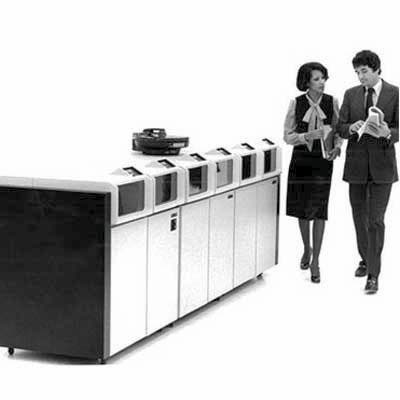
1973: The "Winchester Drive"
The IBM 3340 was introduced in 1973 with three removable data modules, including a 35-MB and two different 70-MB modules. However, when the drive was originally designed, the two modules were expected to be 30 MBs each. That 30-30 configuration sounded like the name of one of the most famous rifles in history, the Winchester .30-30, and so that name stuck despite the eventual configuration of the modules.
The 3340 was also the first drive to feature lubricated disks and a sealed assembly.
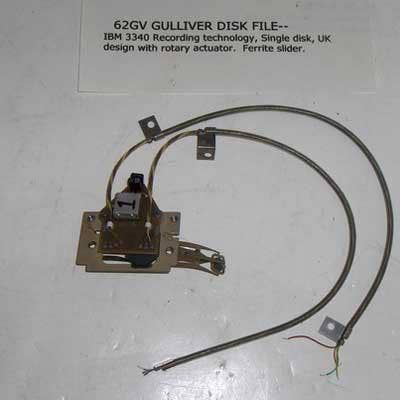
1974: The Era Of Mass Production Begins
IBM in 1974 introduced the IBM 62GV, which included a single 14-inch disk with an initial capacity of 5 MBs, and later 10 MBs and 14 MBs.
It was the first hard drive to break the 100,000-unit shipment mark.
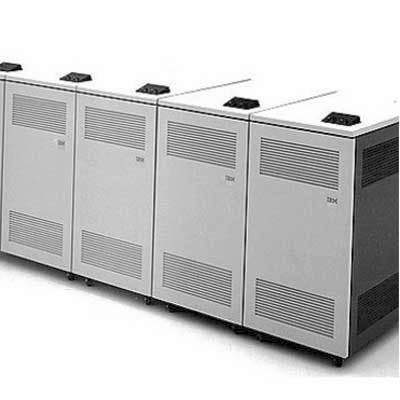
1979: Thin-film Head Technology Introduced
The IBM 3370 was the first hard drive to introduce thin-film head technology to disk storage. Thin-film technology uses a thin layer of material on the head of a drive instead of a ferrite metal-based material to significantly decrease the gap between the head and the platter, which increased data density.
The IBM 3370 initially featured 571 MBs of data, with up to four units able to attach to the IBM System/30 midrange computer for a total capacity of 2.3 GBs.
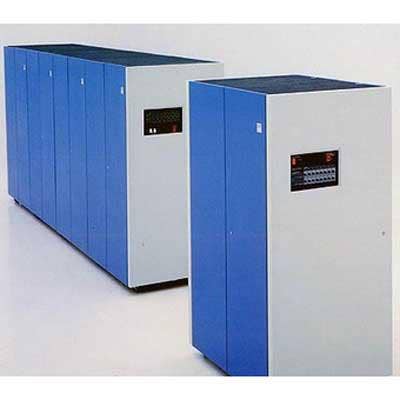
1980: The First Gigabyte-capacity Hard Disk
The IBM 3380, introduced in 1980, shipped with a 2.5-GB capacity, making it the first commercially-available hard drive to break the GB-capacity mark. However, unlike today's lightweight 3-GB and 4-GB hard drives, the IBM 3380 weighed over 500 pounds.
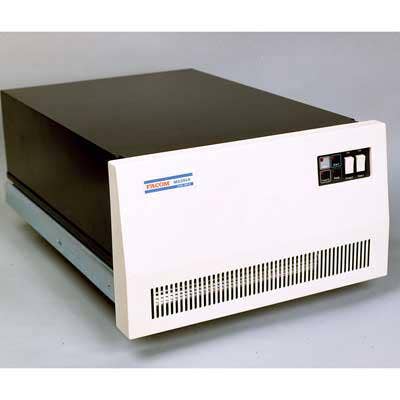
1981: World's First 10.5-inch hard disk
Fujitsu's M2351A, or Eagle-1, became the first 10.1-inch hard drive to become commercially available for OEM customers. It was a key step in the miniaturization of hard drives, which until then featured 14-inch platters.
The M2351A initially had a 474.2-MB capacity, which four years later became 690 MBs. However, by then they were on the way to being replaced by smaller models.
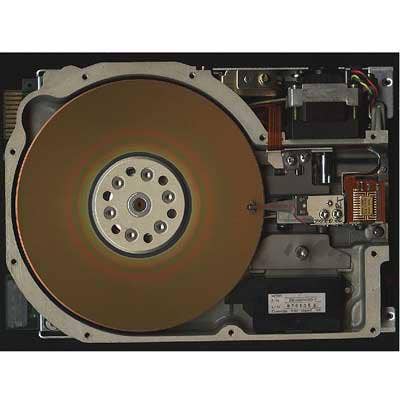
1980: Entering The Modern Era With The 5.25-inch Drive
Shugart Technology, which was founded by early hard drive pioneer Al Shugart and which eventually became Seagate Technology, in 1980 introduced the ST-506, the first 5-1/4-inch form factor drive.
The ST-506, which initially stored 5 MBs of data, brought the idea of a separate disk controller inside the computer system to the storage industry. By moving the controller from the disk drive to the computer, it was possible for the hard drives to be sold for use with multiple brands of computers. IBM's adoption of the ST-506 drove industry-acceptance of the separate controller.
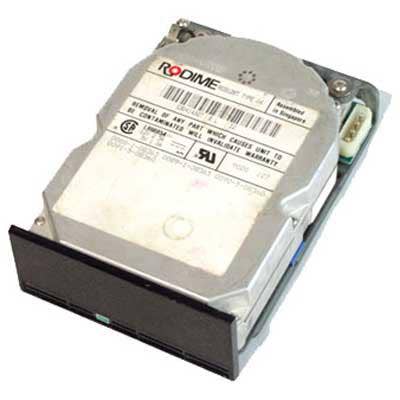
1983: First 3.5-inch Hard Drive
Rodime, a Scotland-based electronics manufacture and builder of 5-1/4-inch hard drives, in 1983 became the first company to build hard drives using the 3.5-inch form factor which had previously been used by Tandon and Shugart Associates for building floppy disk drives.

1981: SCSI Proposed As A Standard
Work on a new universal hard drive interface began in 1979 at Shugart Associates with a goal of addressing storage as logical blocks rather than their physical location in the drive.
That project, first called SASI (Shugart Associates Systems Interface), was renamed SCSI (Small Computer Systems Interface) when it was proposed in 1981 to the ANSI committee as a standard. The standard was approved in 1986, although by that time there were already several SCSI hard drives in the market.
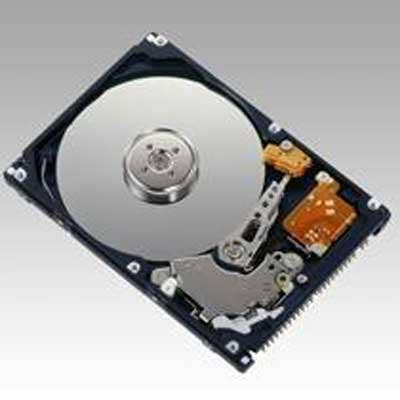
1988: First 2.5-inch Hard Drives Shipped
PrairieTek in 1988 shipped the first hard drives in a 2.5-inch form factor. The 2.5-inch form factor is currently the most common size hard drives, and is expected to remain the volume leader well into the future.
PrairieTek, however, did not fare so well. The company ceased production in 1991.
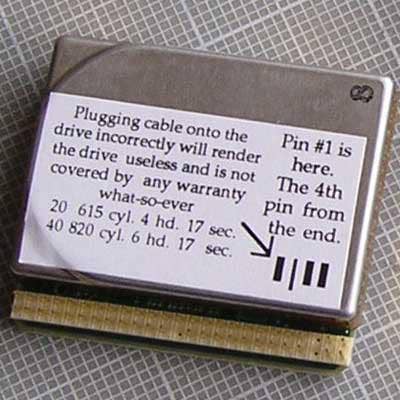
1992: World's First 1.3-inch Hard Drive
Hewlett-Packard in 1992 introduced the HP3013/3014, also known as the "Kittyhawk," which was the world's first 1.3-inch hard drive. It was slated for use in mobile devices, but sales were slow.
The 1.3-inch form factor itself never caught on as the original market for handheld PCs, the precursor of today's tablet PCs, did not succeed.
The 1-inch "microdrives" by IBM and other vendors, which were introduced in 1999 and which fit in a CompactFlash slot, lasted longer.

2000: SATA Standard Developed
An industry-wide organization called the SATA Working Group first formed in 2000 to develop specifications for a new storage standard, SATA (serial ATA).
SATA was developed to replace the ATA (also known as parallel ATA, or PATA) standard that had been used for hard drives and other storage devices for years. Compared to PATA, SATA featured higher performance, thinner cables, and smaller components, and added such capabilities as hot plug and the ability to connect to more than two devices.
The official SATA standard was introduced in 2003. A higher-performance version of SATA featuring 3.0 Gbits per second, or double the original specification, was introduced in 2005.
SATA is currently the standard employed in nearly all low-cost, high-capacity hard drives.
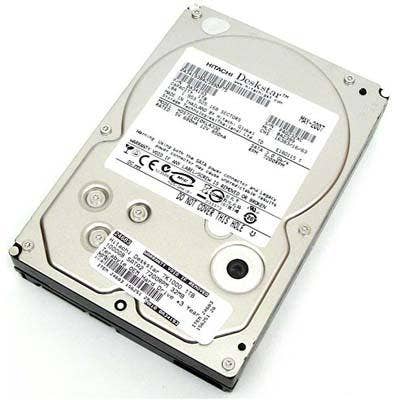
2007: Hitachi GST Ships First Hard Drive To Break The TB Capacity Mark
The Deskstar 7K1000 from Hitachi GST in 2007 became the first hard drive to ship with a capacity of 1 TB.
It was a 3.5-inch form factor drive with five platters.
Hitachi GST, or HGST, in 2012 was acquired by Western Digital. It was formed in 2003 by the sale of IBM's disk drive business to Hitachi.
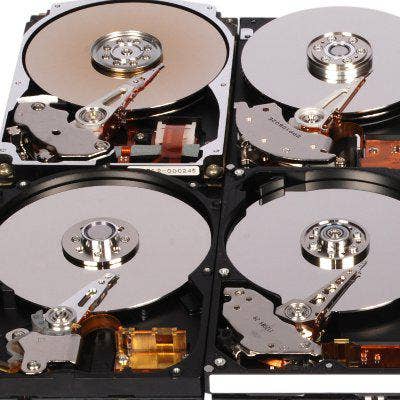
2012: And Then There Were Three
By 2012, the world's hard drive industry was whittled down to three vendors:
* Seagate, which acquired the hard drive division of Samsung;
* Western Digital, which acquired Hitachi GST;
* Toshiba, which in 2009 acquired Fujitsu's hard drive business.
That's a steep drop for an industry which has seen upwards of 200 hard drive manufacturers come and go over the years.
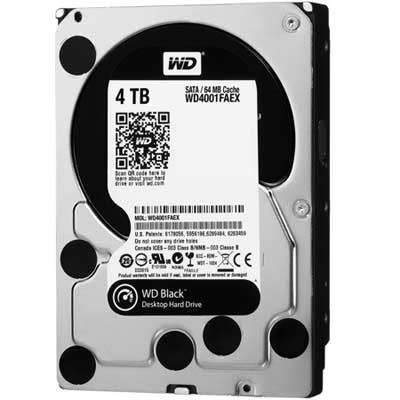
2012: First 4-TB Hard Drives Ship
Between 2011 and 2012, all three major hard drive makers announced and started shipping 4-TB hard drives.
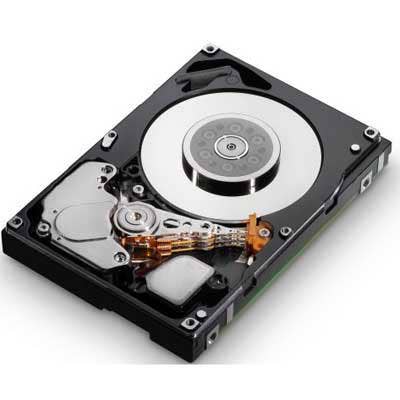
2013: First Helium-filled Hard Drive To Ship
HGST in September introduced plans to ship helium-filled hard drives starting in 2013. Replacing the air inside a hard drive with helium removes the friction and fluttering of platters as they spin at high speed, allowing drives to come with more platters in a given space than possible in air-filled drives.
HGST, now a part of Western Digital, developed new ways of sealing the drives to prevent the eventual leakage of helium, which is lighter than air, out of the drives once they are manufactured.
The biggest question going forward will be how long the helium supply will last, as the U.S. government, holder of most of the world's stocks of the gas from the days when it was used for lighter-than-air aircraft, is selling those stocks.
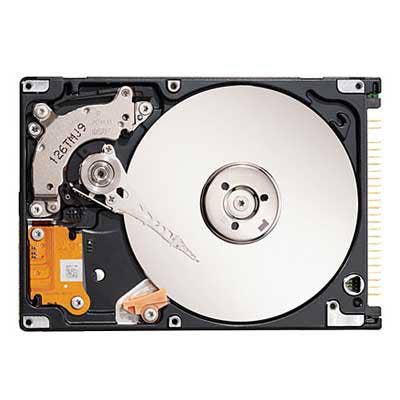
2015: Hard Drive Vendors HAMR Down On New Density
In 2011, the primary storage vendors decided to concentrate future development of high-density hard drives using the heat-assisted magnetic recording (HAMR) technology, according to EE Times.
HAMR uses a new material for making platters that allows data to be written by raising the temperature of the material in specific points that can be read by a magnetic field.
HAMR could eventually allow the development of hard drives with densities of up to 50 terabits per square inch.
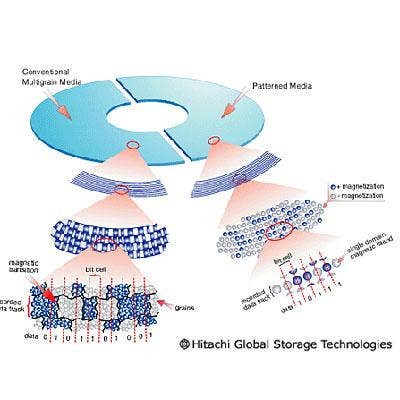
2020: Bit-patterned Media Introduced
Bit-patterned media, which is a way of storing data wherein one bit of data is stored in single magnetic cell, is expected to lose out to HAMR as the next generation of disk storage technology in part because of the cost of developing the manufacturing technology, according to EE Times. However, it is likely the next technology for increasing areal density after HAMR.

2050: The Last Hard Drive Is Sent To The Smithsonian
The last drive could be sent to the Smithsonian Museum in 2050, give or take 20 years.
By then, cloud storage in combination with flash technology and new, as-yet undeveloped technologies as atomic memory, will have made the hard drive too slow, costly, and power-hungry to keep it as a standard storage technology.
By then, anyone who predicts the future of storage, and what they wrote, will be long forgotten.